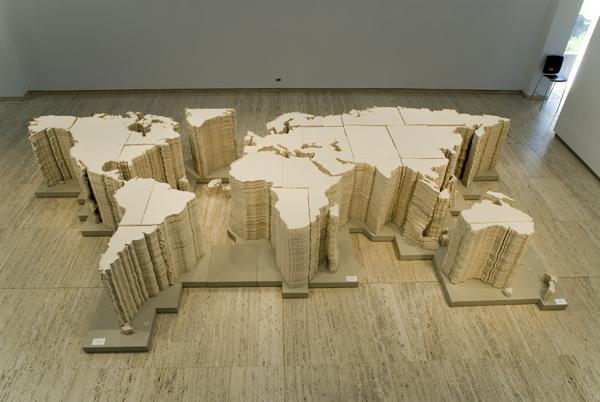DAI FUJUWARA Lecture - The Endless Garment
The lecture by Dia Fujuwara was last wednesday evening as part of the Endless Garment Exhibition, was wonderful. Very engaging and inspirational, I feel very lucky to have been given first hand insights into the Issey Miyake design studio and the processes of designing and creating that they use. I have also developed a small crush on Mr Fujuwara.
I thought it was interesting and apt that one of the first things that Fujuwara said in the lecture was to state that A-POC was “not clothes, not object, it’s a solution of design.” This reiterates that if you are a concept driven designer, a ‘solution’ is the main outcome searched for, before (and if) it translates to something worn. After hearing Fujuwara talk it is obvious to see jut how strong the Miyake studio is in having their own type of studio-language. They know their methods and their approach to process so well, this leading to collections and solutions which are given their own autonomous philosophies, communicative structures and design languages. For example the way in which A-POC uses the four acronyms as its main essences of crux;
A-POC (a piece of cloth)
A-POS (a piece of string)
A-POM (a piece of machinery)
A-POE (a piece of education)
The design of how their solutions are communicated, is just as strong at the solutions themselves. See nifty clip (http://www.youtube.com/watch?v=x4_mK9CebB4)

The process and rigor through which the studio works is something to note. Fujuwara said that if the concept or garment needs more then 3 toiles or 45 meters of fabric and still doesn't work, then it is lost ... “it must perform.” It must but hard at times to have this rule of self-editing. Its was also interesting (and often humorous) to see some of the experiments used as design and concept generation, in their process. For example the miniature catwalk in a bottle being sucked away by the vacuum - “vacuuming fashion”. The painstaking hours of colour matching swatches for the ‘Colour Hunting’ collection. I also really liked the image of the development for catwalk instillation for the latest show in Paris where the mathematical web was created on display racks.
From all the images and clips of film that Mr. Fujuwara showed us, it is also very easy to see their strong notion of 2D to 3D. Cloth to form. This is something that is very apparent in the way they display their garments too. For example, there was that image of an exhibition display where the fabric was hung up vertically, with the shirt that had been cut from it held up, shrunken (from dye/heating) in its center. Again this can be seen through the way in which A-POC is displayed, often strung from the ceiling with long lengths of flat cloth presented. And then when cut out, the positive forms of the pieces and negative spaces of the un-used flat knit is very apparent. Or again when we see the models wearing the A-POC Galaxy denim collection, their garments still joined to the flat fabric it came from. This notion of worn space is a garment as created from 2D forms was made again when Mr Fujuwara gave the example of a pocket in a garment. “People cant wear by themselves, their is space is your pocket and you wear space.”


Hi Hannah, this is a response to your first post, there doesnt appear to be a comment section on that one...
ReplyDeletelook at the different ways of presenting fashion within an exhibition format. How is the display formatted and how does this affect how the garment is read. To convey further a sense of the processes involved in creating a garment, or to show the dialogue between the outcome and the process different hierarchies need to be established within the space and the things. Good post. check out:
http://www.freudenthalverhagen.com/?cat=events
was reminded of this by your post. RB
Hi Hannah,
ReplyDeletefor this post-
yes, a studio that are very occupied with all the stages involved in 'the passage of a 2D surface to become a 3D form'. Dai's lecture also suggests that the future for design involves an understanding of systems, and how these could become solutions for production, rather than just producing thins.
RB